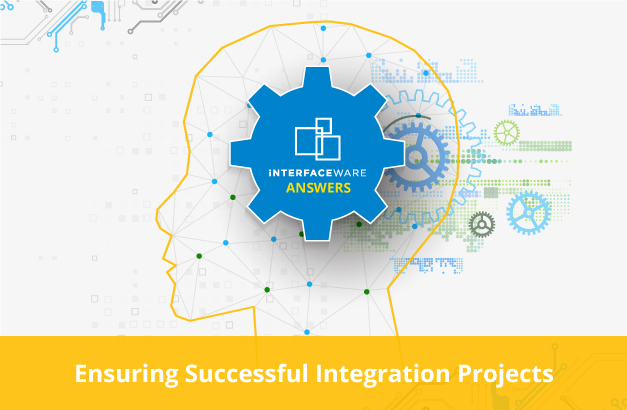
FAQ: How Can I Ensure the Success of My Integration Projects?
Today, more than ever, integration project planning and execution is extremely critical to the future success of your healthcare organization. Without it, initiatives can fall flat, projects can go over budget, and the expected outcome may not be realized.
In the following post, we’ll go over some of the steps and technology you can begin implementing immediately to empower yourself, and your team, to succeed in any integration project.
Step 1: Ensure Your Organization Has an Integration Sponsor
What is an Integration Sponsor?
An integration sponsor is a leader who continuously thinks about the big-picture; looking at the future and preparing themselves and their team for the challenges of new technologies and standards that will come. Without a leader championing the cause, integration will never become a priority for your organization.
Top Priorities for an Integration Sponsor:
- Elevate the status of integration and make sure others see its real value
- Engage and listen to the concerns of all stakeholders
- Ensure your projects align with your organization’s goals
Step 2: Create an Integration Roadmap
What is an Integration Roadmap?
An integration roadmap shows how integration will be applied to meet the strategic needs of your organization. It can be used as a framework for the planning and coordination deployments, and should also clearly state where your organization is heading with integration in general.
Some Key Considerations:
While no roadmap is the same, here are some key questions you should be asking as you create yours.
Data Formats:
- Which data formats are you currently handling?
- Are you on top of industry shifts, new standards, and data formats?
Transport Mechanisms:
- Will all of your systems require a different transport mechanism?
- How do applications connect inside and outside of your organization?
- Are you prepared to connect using the latest and most common protocols and standards?
Capacity:
- Do you have adequate storage, network, and bandwidth capacity?
- Is your staff agile enough to adapt to the changing requirements and regulations?
- Do you have the right infrastructure in place to support a growing organization?
Systems:
- Which systems do you need to integrate now?
- What possible systems could you integrate with in the future?
- Is there an EHR upgrade or replacement project on the horizon?
Industry Changes:
- Are there new government mandates you need to comply with by a certain date?
- Do any new regulations impact your systems?
- Is your current integration strategy built to accommodate future changes?
Security:
- Are you HIPAA compliant?
- Do you have security and privacy measures in place to protect sensitive patient data?
- Who is going to have access to your integration platform?
- Who needs to have access to raw data, reports, and alerts?
Step 3: Invest in Your Team
Modernizing your integration team is pivotal to enhancing the role of IT in your organization. Here are some steps we recommend:
- Build: Look for people with strong analytical skills and the ability to think through the implications of their choices.
- Test: No system is perfect so hire people with a keen eye for imperfection and the ability to automate testing wherever possible. When done right, testing will catch everything missed by your build team.
- Maintain: Find or empower employees who put emphasis on uptime. They needn’t be the strongest programmers on your team, but should have a broad range of knowledge including databases, operating systems, and industry best practices.
- Report: Consider expanding your team with data experts who are skilled at finding insights amongst large datasets. With a central integration platform, all of the data of your organization will be at your fingertips.
Step 4: Give Your Team the Right Tools to Succeed
The most valuable tool for your team is your integration engine. It is a critical piece of your infrastructure; responsible for connecting every application and ushering data throughout your entire organization.
The right integration engine accomplishes your goals, is easy to use, is customizable and is scalable to your future needs. The selection of the right -or wrong – integration engine will impact the reliability and flexibility of your data delivery inside and outside of your organization and can be the difference between a productive or unproductive team.
Two features separate the best integration tools from the rest:
- Can it be easily customizable?
- Is it easy to identify and troubleshoot errors in the system?
Step 5: Define What Success Looks Like
Success is defined differently throughout departments and organizations. Before you start any work, figure out what your key performance indicators (KPIs) are and start collecting them immediately. The sooner you gain insights on what’s working and what’s not, the sooner you can share your results and adjust to improve your processes.
If you found this blog post to be useful and are interested to find out more about how to ensure successful integration projects, be sure to download our free Savvy CIO’s Guide To Successful Integration Projects!
